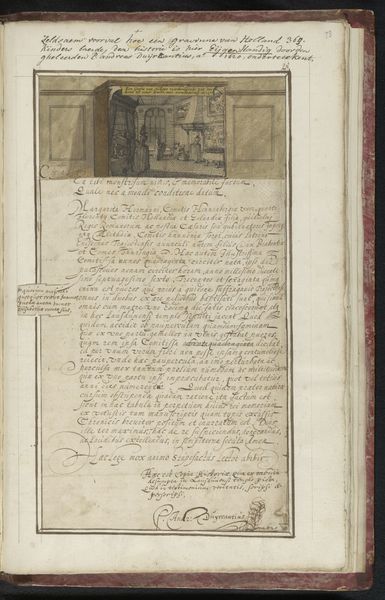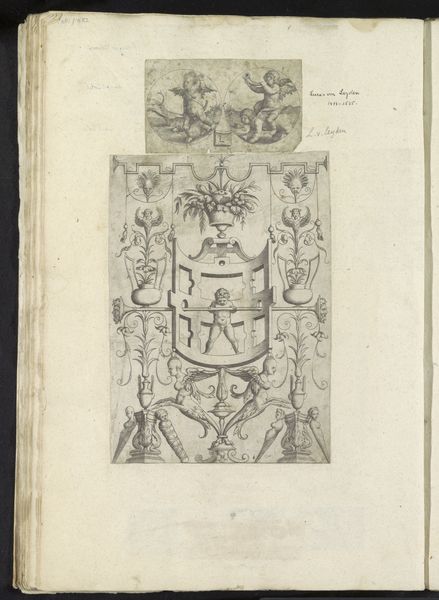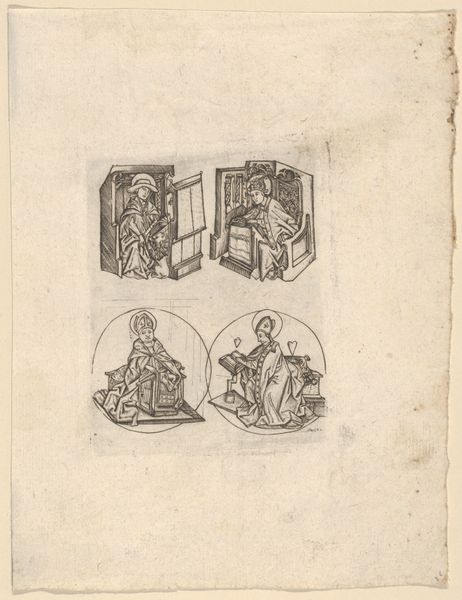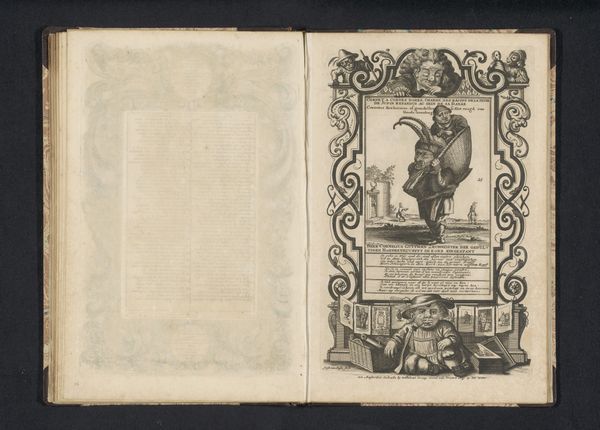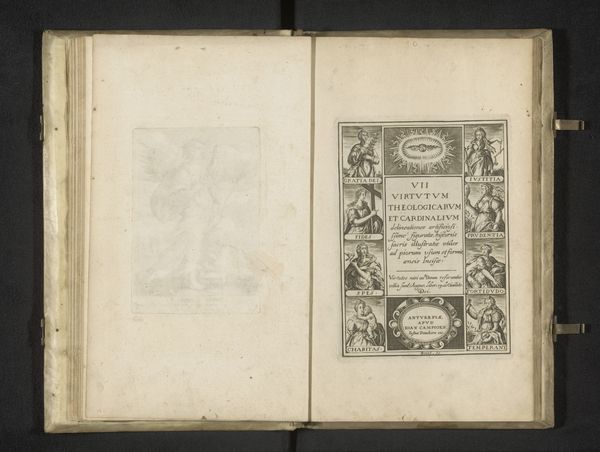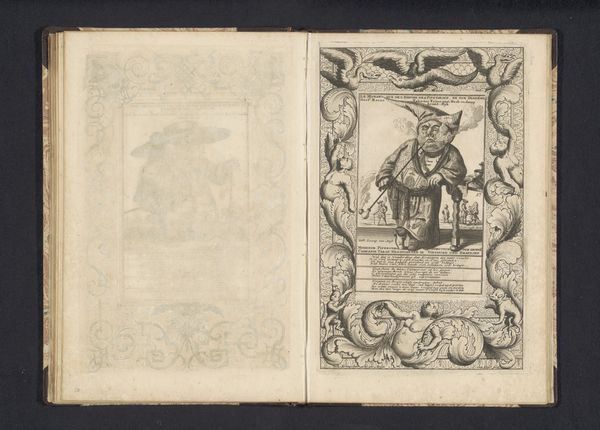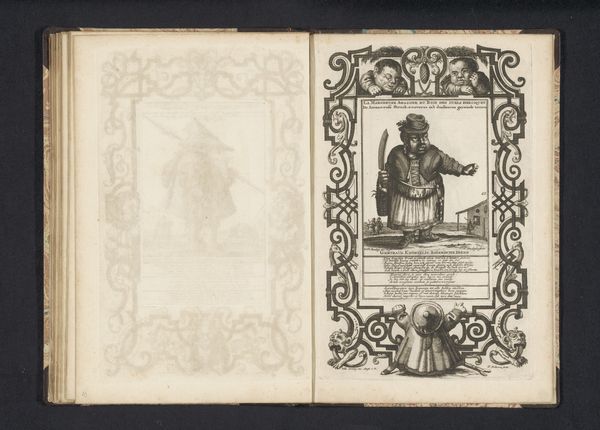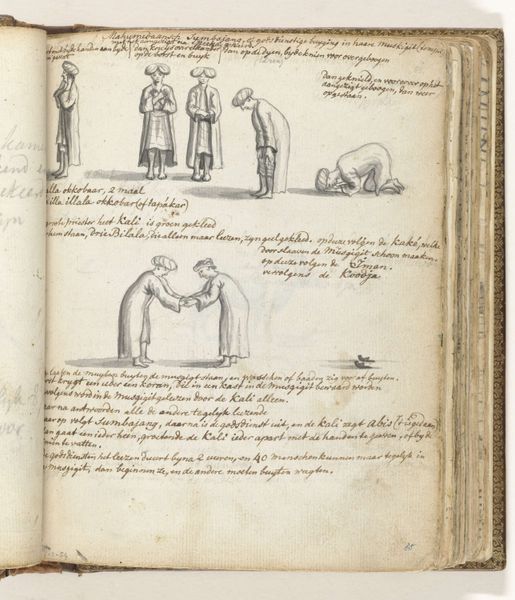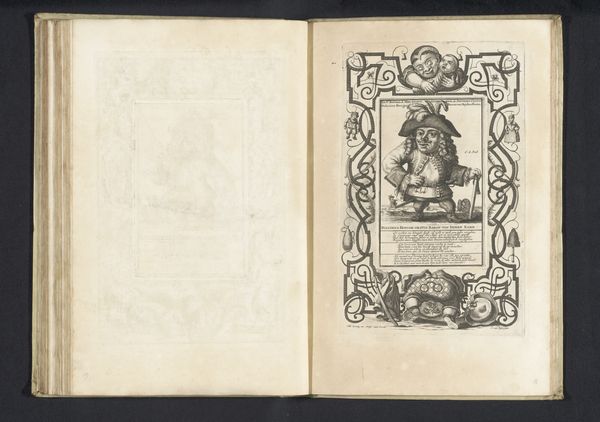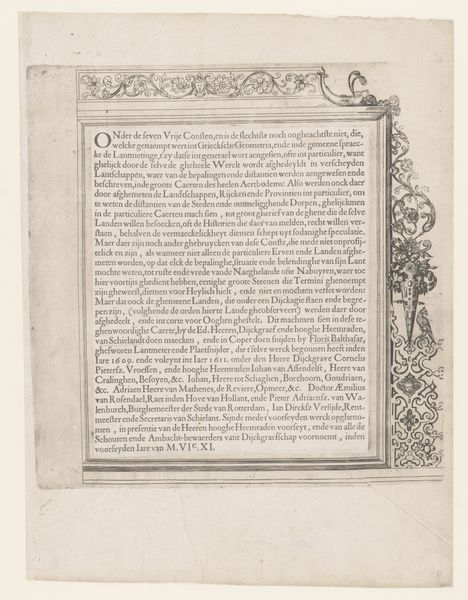
drawing, paper, ink, pen
#
portrait
#
drawing
#
old engraving style
#
figuration
#
paper
#
ink
#
romanticism
#
pen-ink sketch
#
ink colored
#
pen work
#
pen
#
genre-painting
#
miniature
Dimensions: height 430 mm, width 270 mm
Copyright: Rijks Museum: Open Domain
Curator: What do you think of this ink drawing, "Siamese Twins from Ghent, 1809," by Joseph van Huerne? It’s a work created sometime between 1809 and 1814. Editor: Well, my first impression is one of constraint, almost a clinical sense. The figures, rendered in pen and ink, are encased within what appears to be a glass jar. The starkness of the medium emphasizes a feeling of scientific observation over any kind of sentimentality. Curator: Indeed. And it is a scientific observation, wouldn’t you say? This wasn’t necessarily intended as a sentimental portrait in the way we think of art today. Given its inclusion in what seems to be a notebook filled with careful annotations and descriptions, I suspect that this image served primarily as a record of an unusual medical occurrence. Consider also, the period—early 19th century, Romanticism with its growing scientific explorations. Editor: I see what you mean, the careful linework documenting the physical form. But I can't help but feel there's something inherently poignant about depicting these children so meticulously, trapping them—or at least the memory of them—on the page. Aren't the concepts of “romanticism” wider? Do you really think “science” excludes the subjective? There’s a certain emotional weight evoked by the image, the intertwining of bodies, the suggestion of shared experience, locked within a jar of observation, their gaze for ever turned inwards… that kind of symbol reverberates for years, regardless of the scientific milieu. Curator: You raise an important point about the multiple symbolic readings available to us. Yes, their connection and dependence are visually emphasized. And, indeed, Romanticism contained deep subjectivity. But doesn’t it make it a specimen nonetheless? A strange and even monstrous coupling—if read via the lens of the ‘freak show’ and of early museum collections… It’s important to be aware how this drawing functions historically. Editor: It really makes you consider the cultural and historical shifts in how we perceive the human form, doesn't it? Curator: Yes, and the politics inherent in the act of looking.
Comments
No comments
Be the first to comment and join the conversation on the ultimate creative platform.
